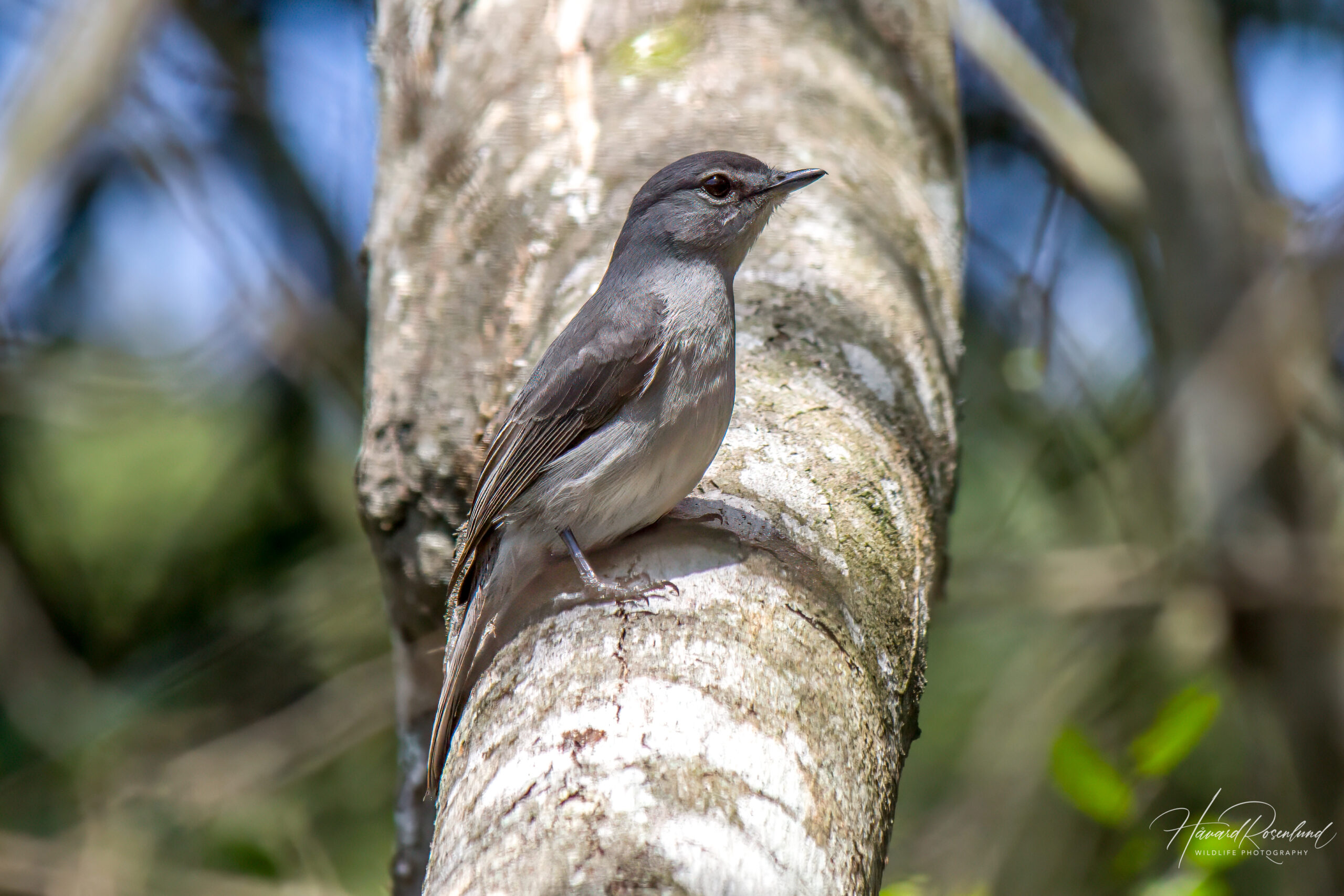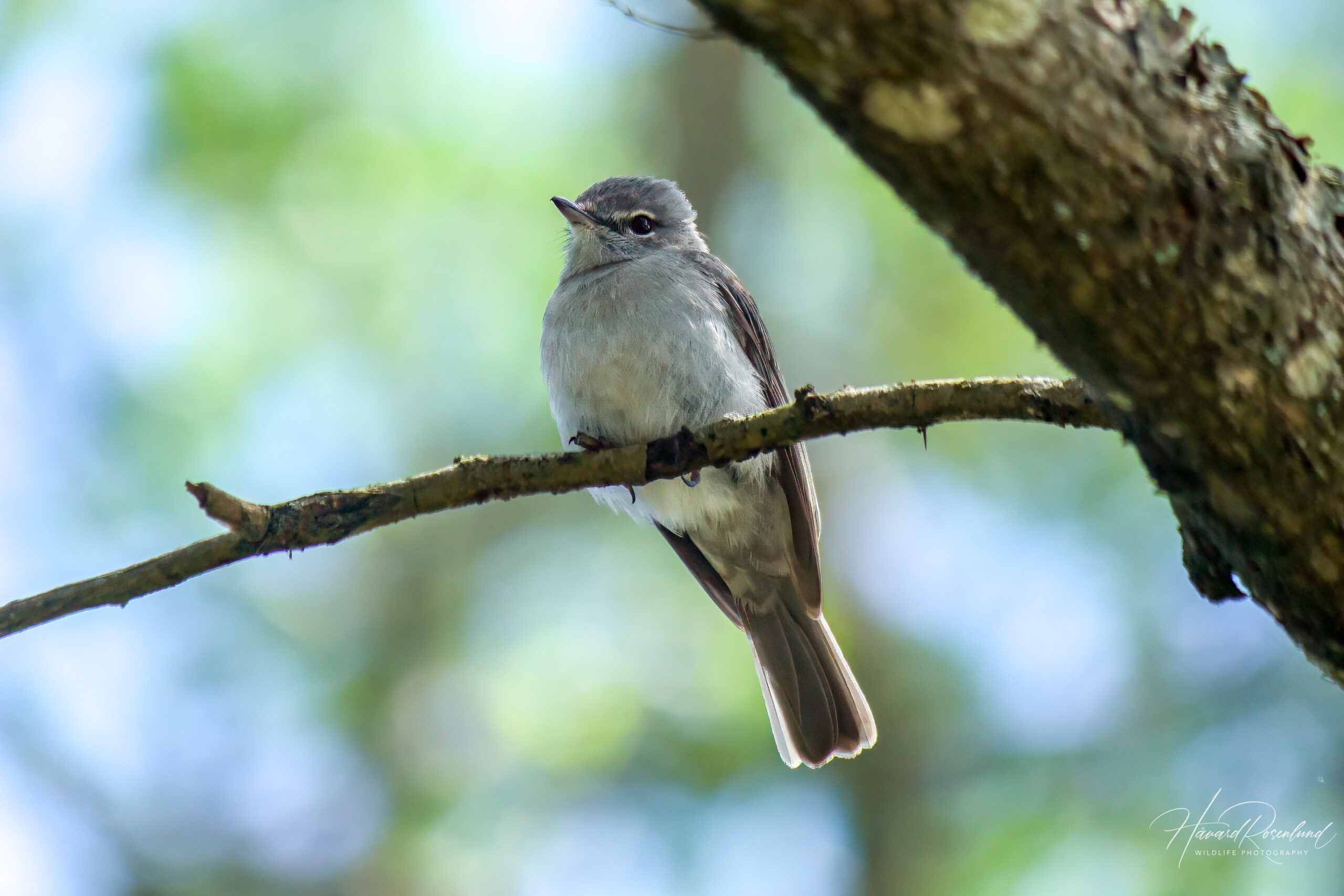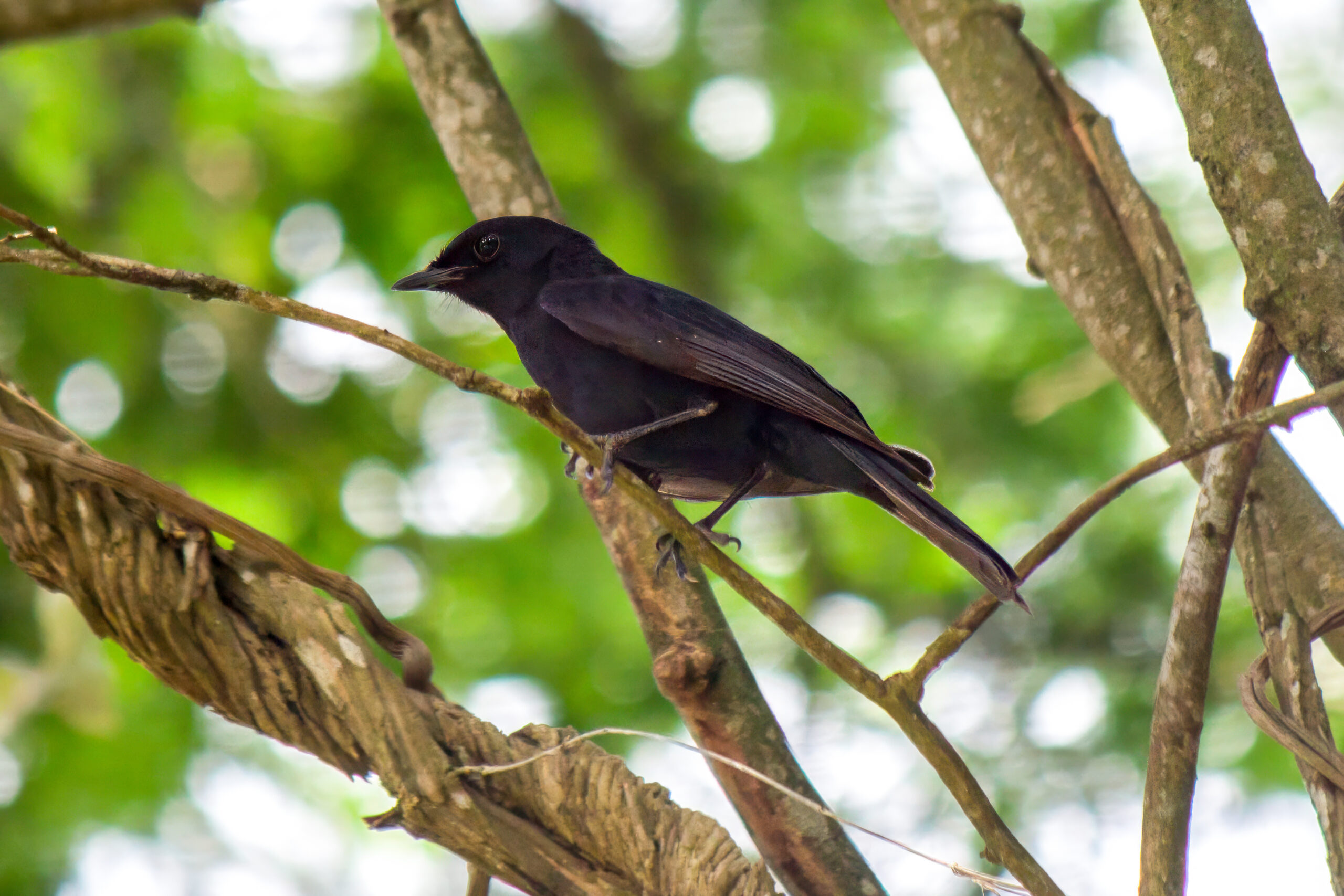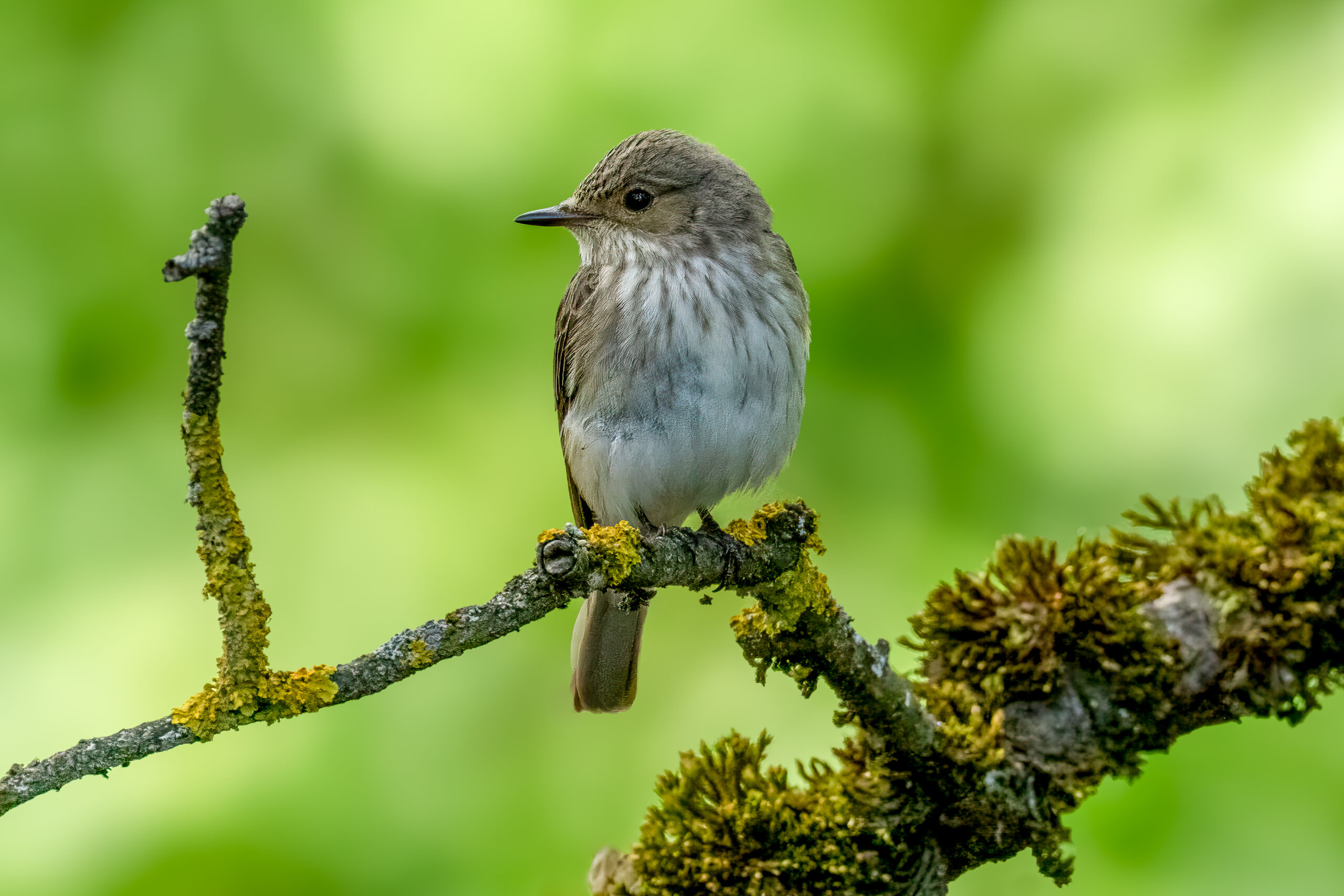Ashy Flycatcher
(Fraseria caerulescens)
Description
The ashy flycatcher (Fraseria caerulescens), is a small passerine bird predominantly found in sub-Saharan Africa. Its size ranges from 13 to 15 cm (5.1–5.9 in) in length. It is characterized by its ashy-grey plumage, which is paler on the underside, and a distinct eye-ring that is often pale in color. The beak is fine and pointed, ideal for catching insects. This species is very similar to the grey tit-flycatcher (Fraseria plumbea), but can be distinguished on its tail. The grey tit-flycatcher has white edges on its tail, which is often fanned out, whereas the ashy flycatcher has an all-grey tail. The African dusky flycatcher (Muscicapa adusta) is also similar, but is often more brownish in color, and appear rounder and “cuter” than the ashy flycatcher.
Diet & habitat
The ashy flycatcher inhabits a variety of woodland environments, particularly favoring areas with dense foliage or undergrowth, often near water. It is commonly found in both montane and lowland forests, as well as in wooded gardens and plantations. The bird is an insectivore, feeding primarily on small insects and other arthropods. It captures its prey in a typical flycatcher manner, performing agile flights from a perch to snatch insects in mid-air or picking them off leaves and branches.
Nesting
The breeding season of the ashy flycatcher varies geographically, but it generally breeds during the wet season to coincide with an abundance of insect prey. The species is monogamous, with pairs often maintaining territories. The nest is a neat cup constructed from grass and spider webs, usually placed in a tree or bush. Females lay 2 to 3 eggs per clutch, which are incubated for about 14 days. The chicks are altricial and remain in the nest for approximately two weeks before fledging. Both parents participate in feeding and caring for the young.
Status
The ashy flycatcher has a wide range and a stable population trend. However, like many forest-dwelling species, it could potentially be threatened by extensive habitat loss due to deforestation and land conversion for agriculture. It is listed as least concern on the IUCN Red List.








